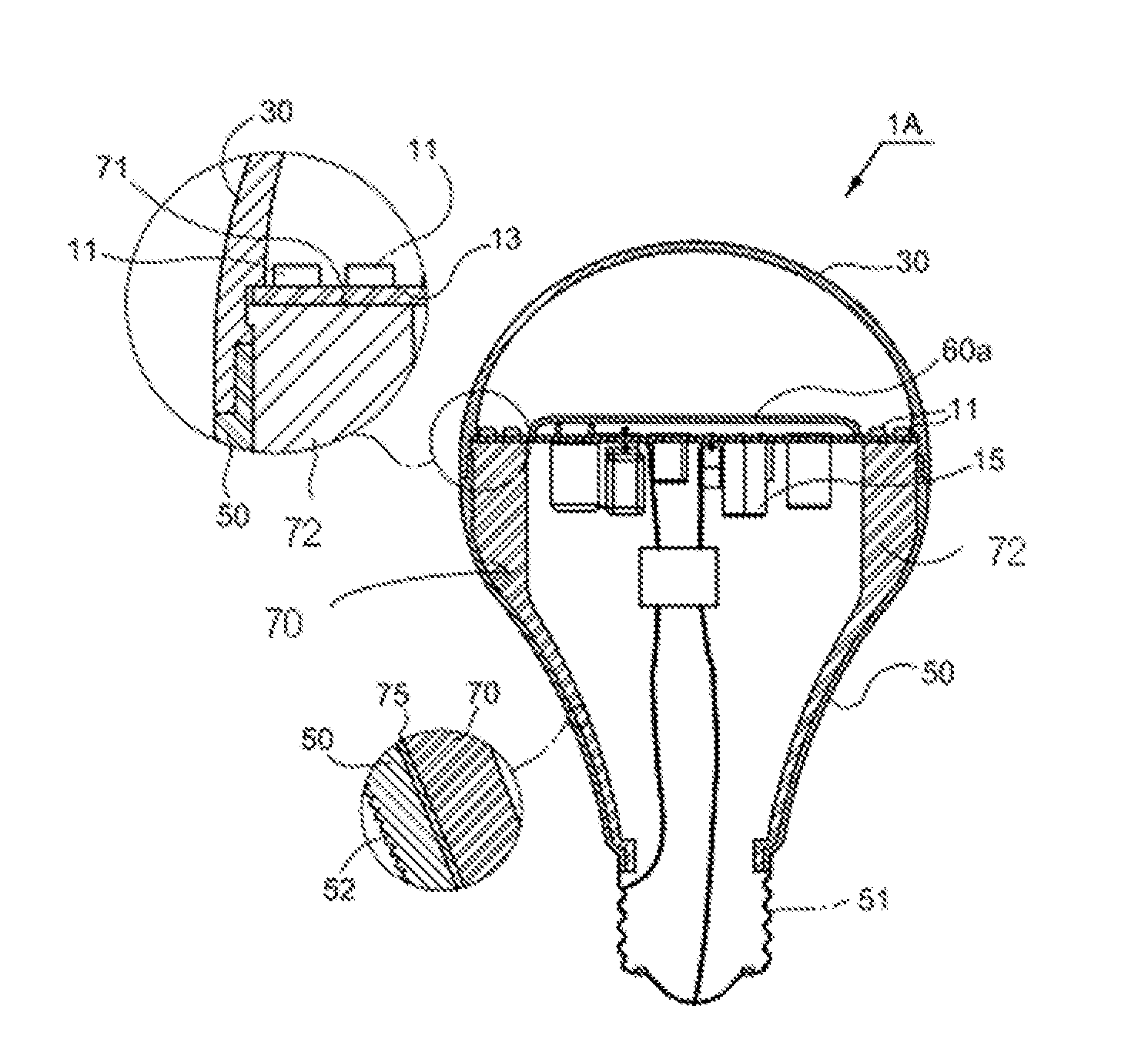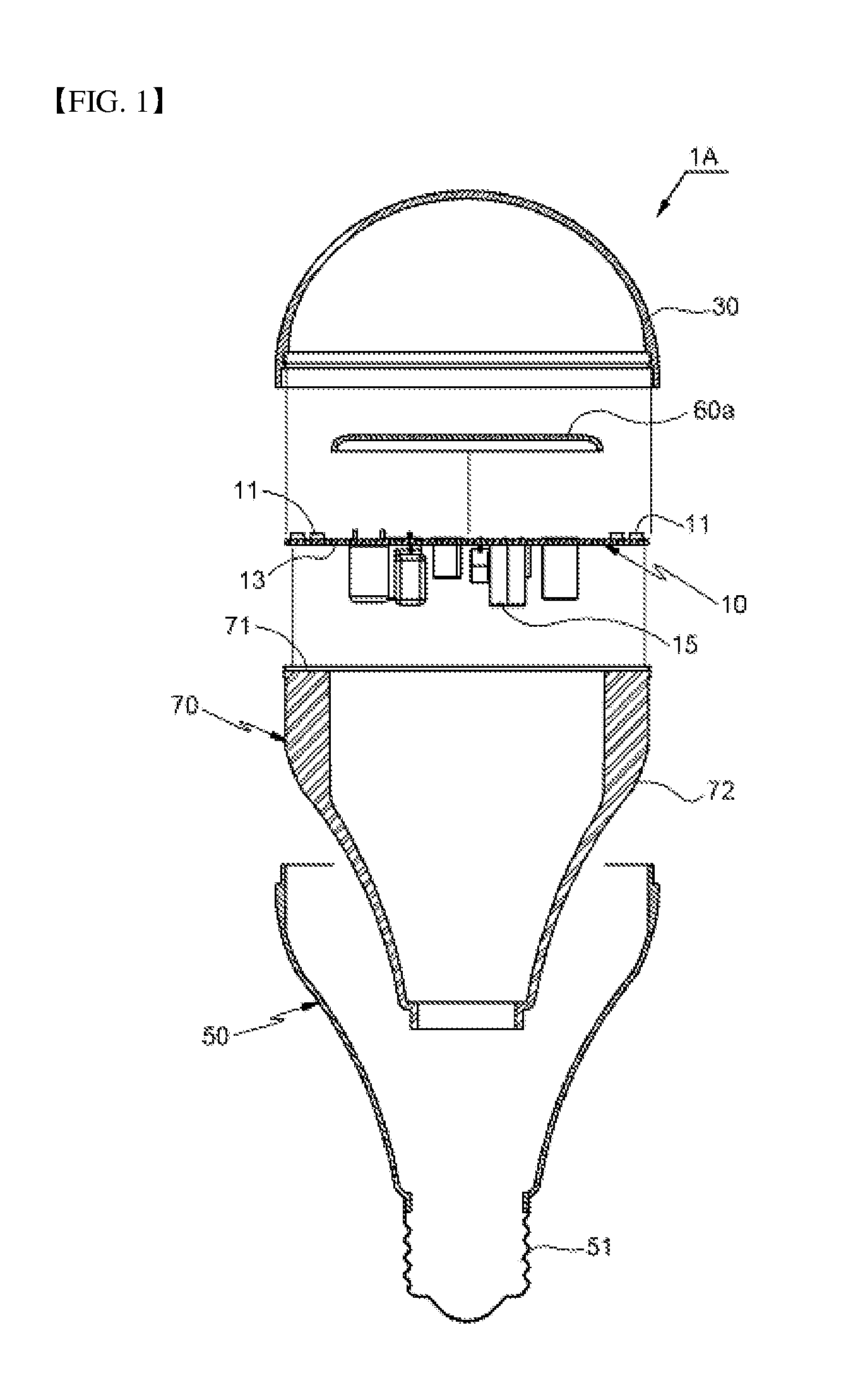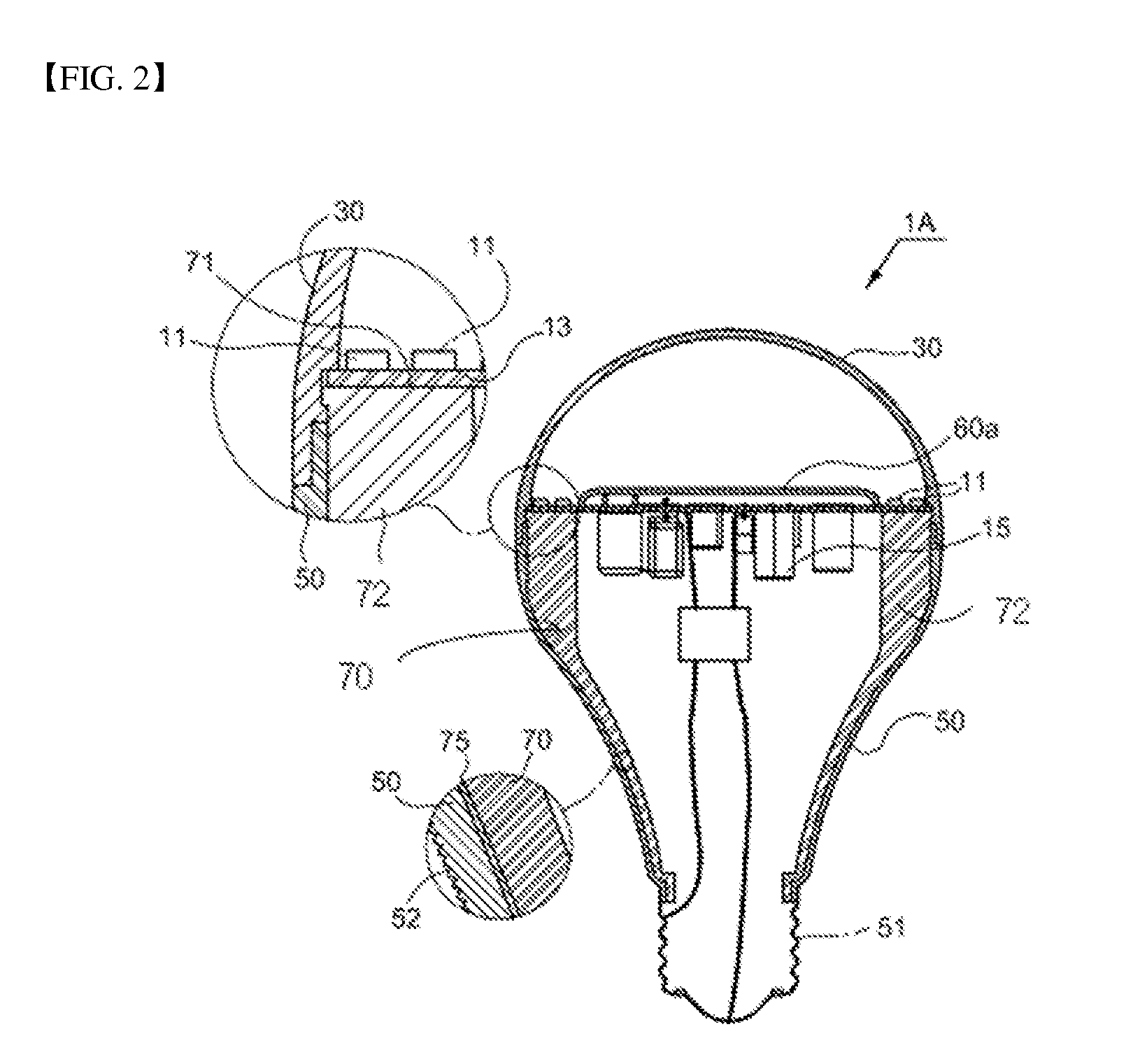LED lamp with heat dissipation member
a technology of heat dissipation member and led lamp, which is applied in the direction of cathode-ray/electron beam tube circuit elements, lighting and heating apparatus, semiconductor devices for light sources, etc., can solve the problems of reducing and affecting the heat dissipation efficiency of the lamp. achieve the effect of enhancing the surface heat dissipation constan
- Summary
- Abstract
- Description
- Claims
- Application Information
AI Technical Summary
Benefits of technology
Problems solved by technology
Method used
Image
Examples
Embodiment Construction
[0053]Exemplary embodiments of the present invention will be described with reference to the accompanying drawings.
[0054]FIG. 1 shows a cross-sectional view of the disassembled parts of an LED lamp according to one exemplary embodiment of the present invention, and FIG. 2 shows a cross-sectional view of the assembled LED lamp of FIG. 1.
[0055]As shown in FIG. 1 and FIG. 2, LED lamp 1A according to the first exemplary embodiment of the present invention comprises one or more LEDs 11 mounted on the PCB 13, a floodlight cover 30 that transmits light from the LEDs 11, and a power source base 50 coupled to the floodlight cover 30 and having a terminal 51 at one end thereof. The power source base 50 is made of an insulation material, and lamp 1A further comprises a heat dissipation transfer member 70 which includes a heat sink 71 and a main body 72 formed and installed so as to overlap with and be in tight contact with the inner side of either the power source base 50 or the floodlight cov...
PUM
 Login to View More
Login to View More Abstract
Description
Claims
Application Information
 Login to View More
Login to View More - R&D
- Intellectual Property
- Life Sciences
- Materials
- Tech Scout
- Unparalleled Data Quality
- Higher Quality Content
- 60% Fewer Hallucinations
Browse by: Latest US Patents, China's latest patents, Technical Efficacy Thesaurus, Application Domain, Technology Topic, Popular Technical Reports.
© 2025 PatSnap. All rights reserved.Legal|Privacy policy|Modern Slavery Act Transparency Statement|Sitemap|About US| Contact US: help@patsnap.com



